The following is an excerpt from “Zorn’s Studio: The Artist’s Materials and Techniques” by Art Historian Emma Jansson.
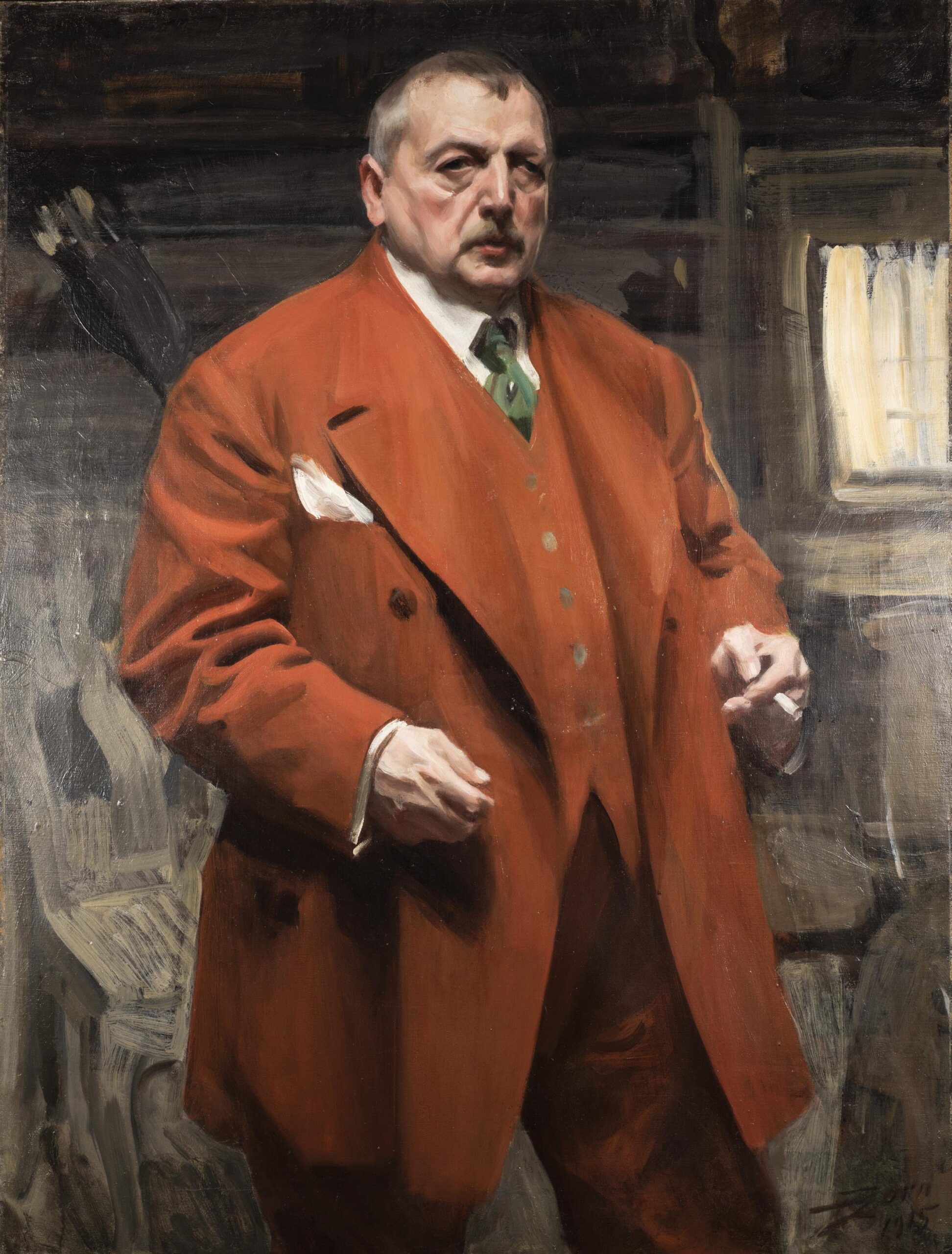
“Self-Portrait in Red” – A Hidden Procession
The painting “Self-Portrait in Red” represents one of two self-portraits that Anders Zorn painted during the last stages of his career, with the other being “Self-Portrait in a Wolfskin Coat.” Both works were completed in 1915 and exhibited parallel to each other during the final years leading up to Zorn’s death in 1920 — at the 1916 Charlottenborg exhibition in Copenhagen, as well as the 1916 Larsson-Liljefors-Zorn and 1920 Zorn retrospectives held at Liljevalchs Konsthall in Stockholm.
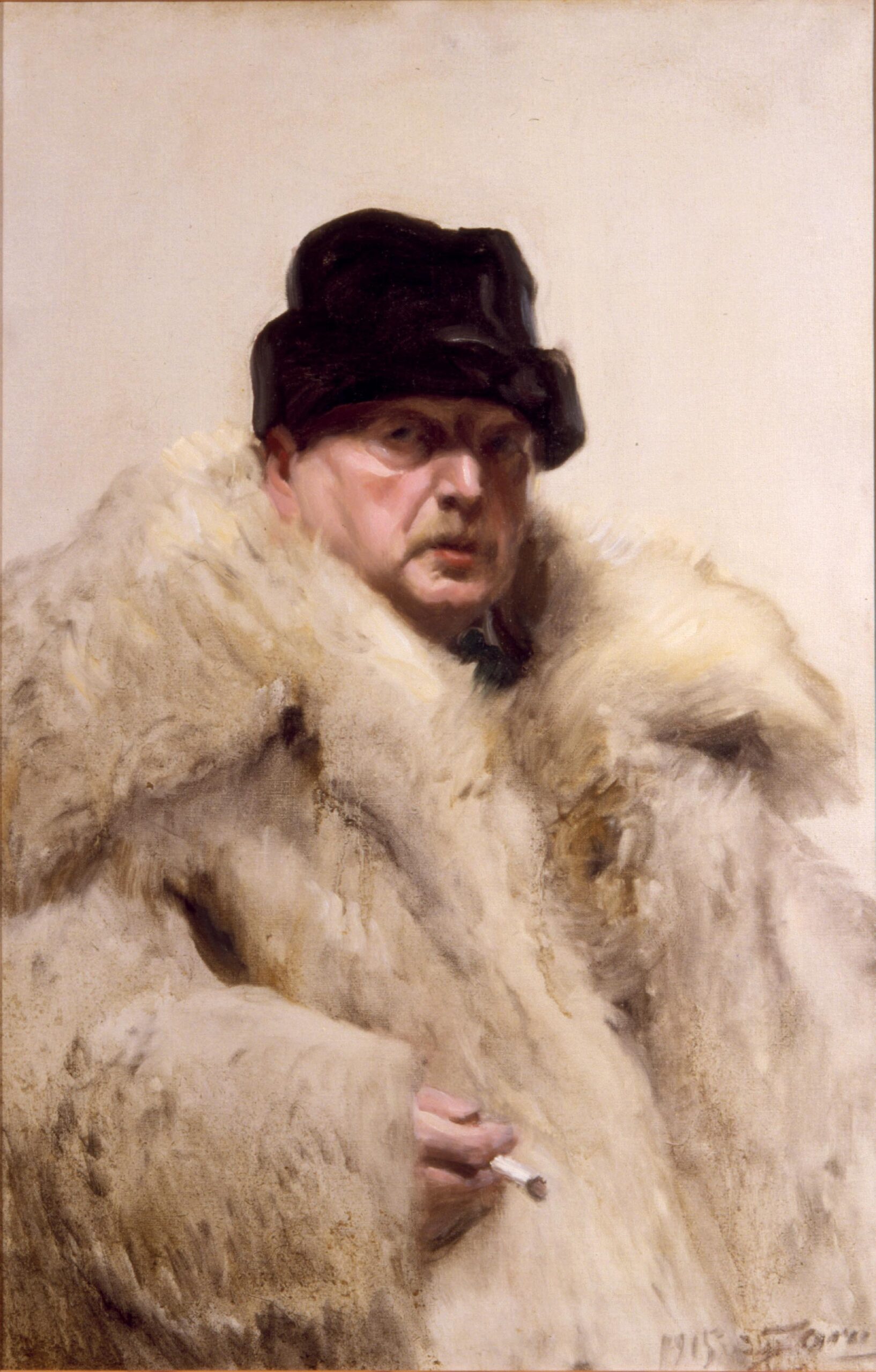
However, despite being painted the same year and also exhibited together, the two works are greatly contrasted when it comes to paint application, with “Self-Portrait in a Wolfskin Coat” displaying an extreme thinness in handling that Zorn had already started developing in early twentieth-century works.
In comparison, the facture in “Self-Portrait in Red” is more reminiscent of the artist’s earlier works in oil, with thick applications of paint being used for both the modelling of the flesh, clothing and background, demonstrating that Zorn’s development towards thinner and more dilute handling was by no means monolithic, as he continued to vary his facture depending on his desired effects for each individual painting.
In addition, like with his earlier “Self-portrait with Model,” this painting bears traces of compositional reworkings. For example, while Zorn’s general outline remains largely unchanged, the artist did shift the position of his proper-right hand several times before settling on its now slightly lower position. This postural shift is visible in part through close examination of the painting’s surface, whereby the red paint applied on top of the previous campaigns has become slightly abraded and more transparent over time, revealing the pentimenti below. It is most prominent, however, in the painting’s x-radiograph, which shows how Zorn changed the position of the arm and the hand at least three times before reaching its final, desired placement.

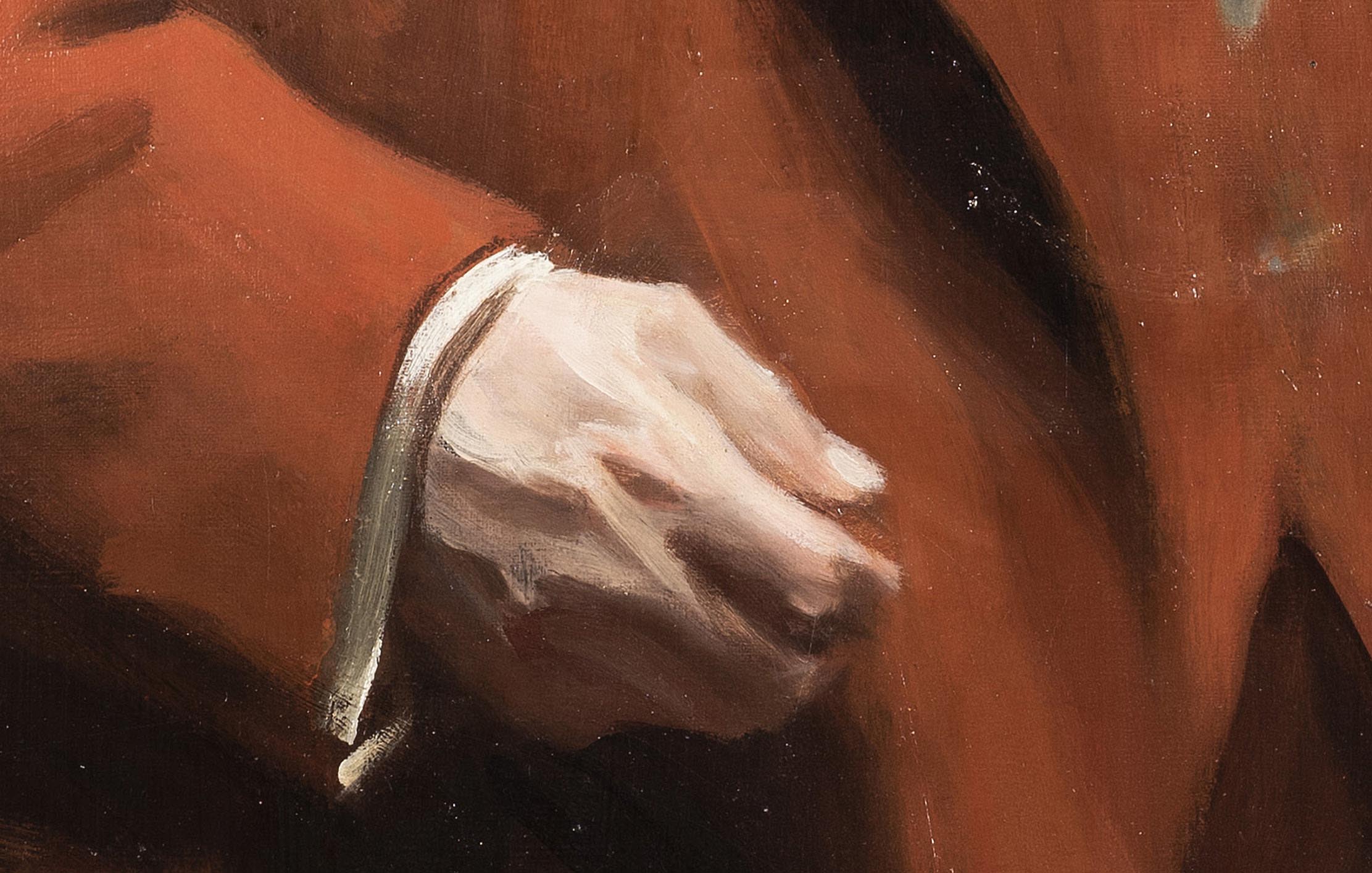
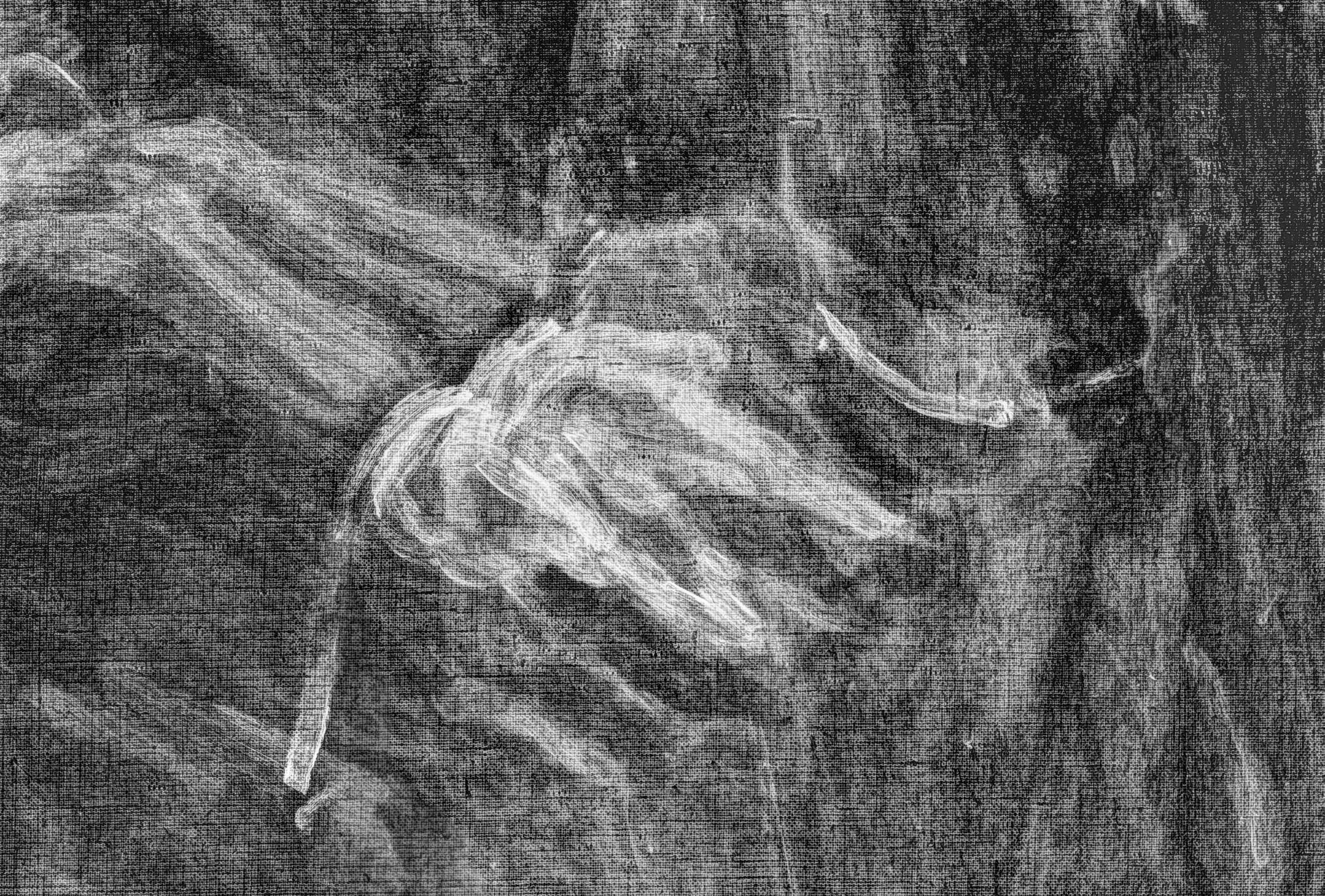
Furthermore, the x-radiograph revealed an additional pentimenti that is not as readily visible on the painting’s surface. Positioned behind the artist’s proper-right shoulder there appears to have been a group of figures, albeit executed in a summary manner without any distinguishable facial features. Additional examination of this area using paint cross-section analysis revealed an underlying green paint layer, which was subsequently painted over using the brown paint of the wooden cabin interior.
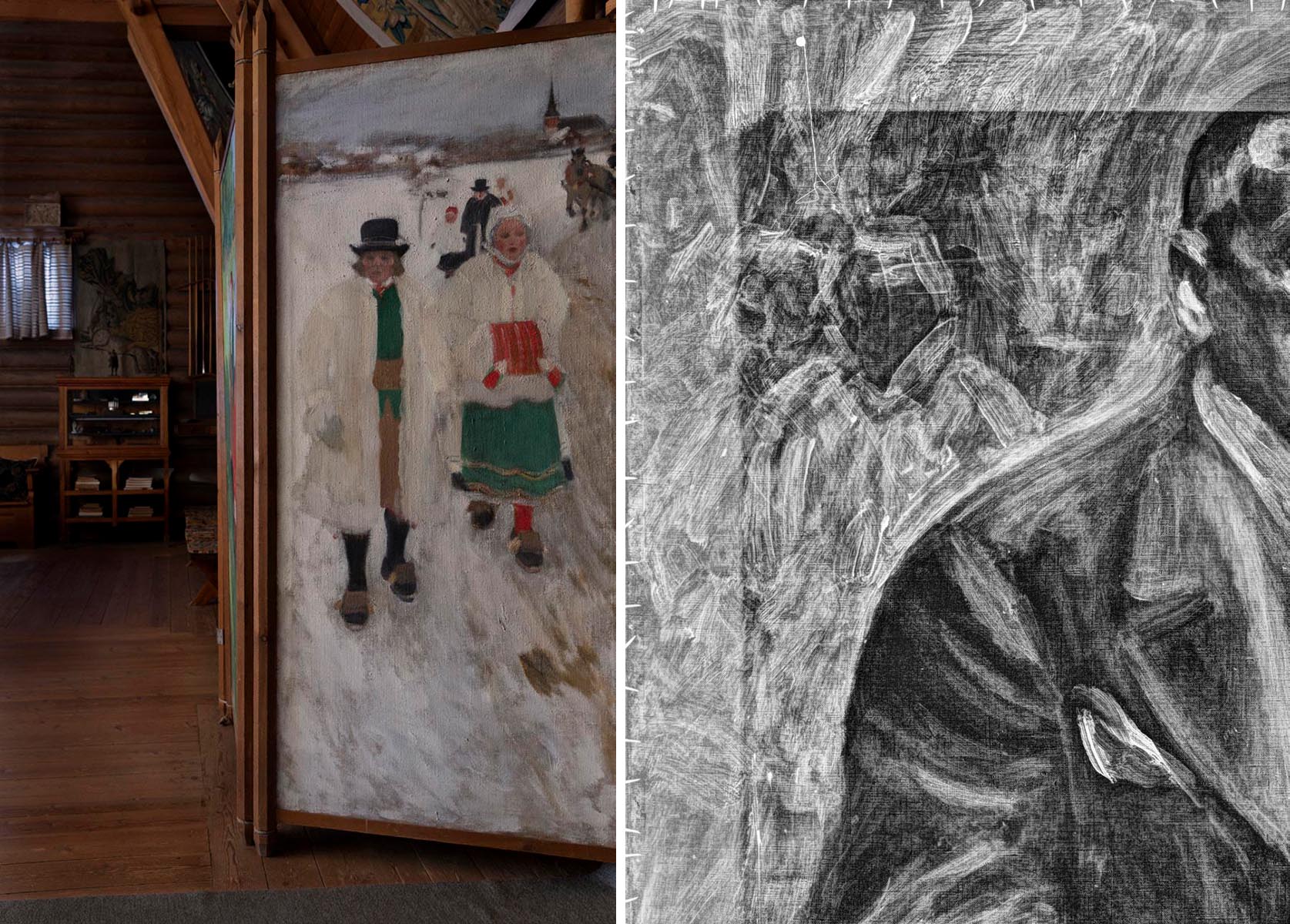
Together, this information suggests that the previous background might possibly have depicted a painted screen, currently on display in the Zorn couple’s historical residence at the Zorn Museum, showing various celebratory scenes and processions typical of Dalecarlian folk culture. However, as with “Self-portrait with Model,” Zorn later chose to mute the background to a much more colouristically subdued wooden backdrop — perhaps due to the colours of the painted screen clashing with his bright red suit.
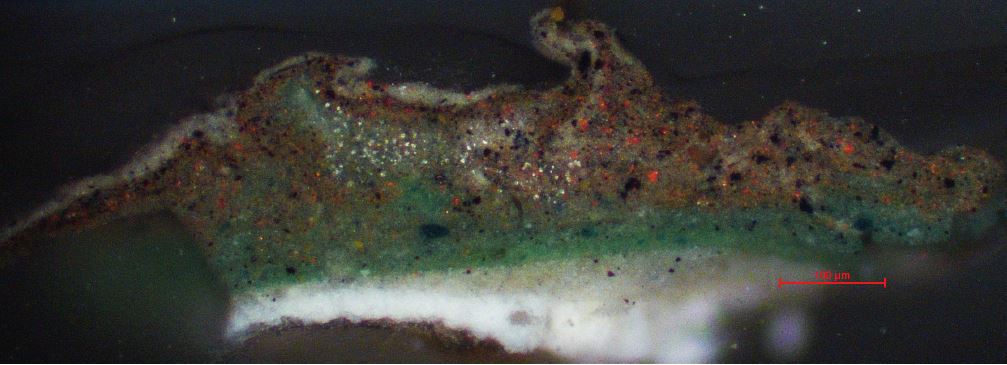
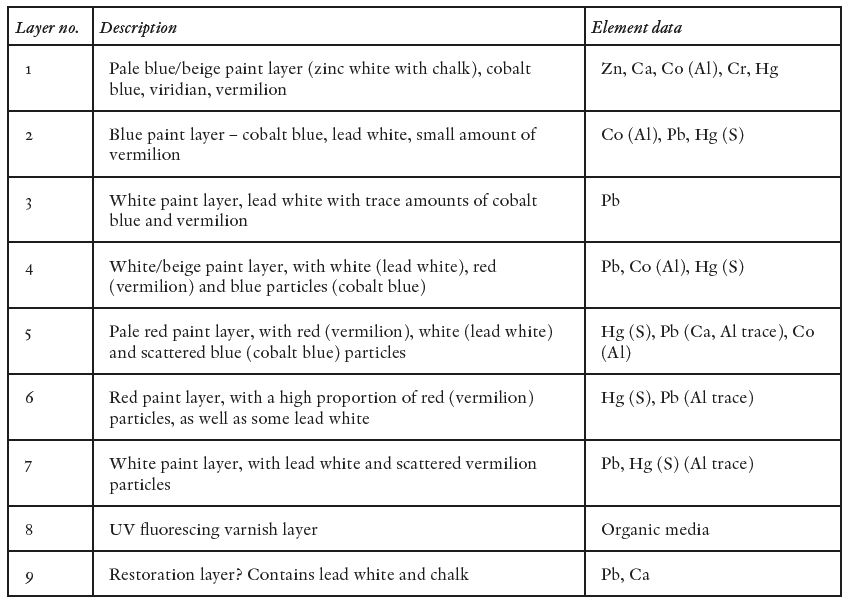
More Information: Get your copy of “Zorn’s Studio: The Artist’s Materials and Techniques” at https://shop.zorn.se.




